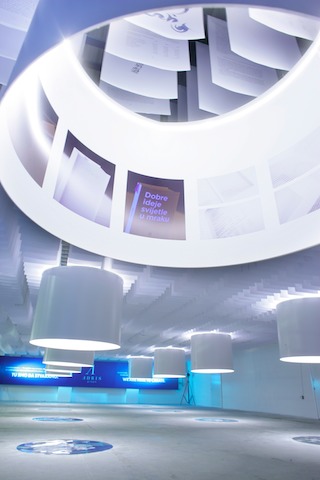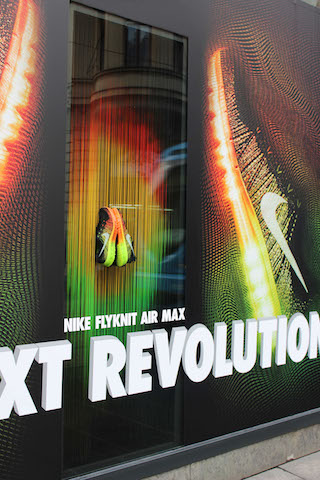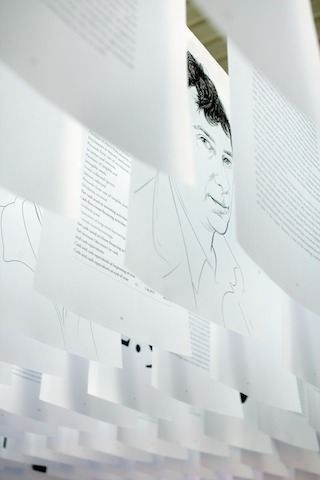Design
On strategy and storytelling: spatial design studio Brigada
Established just three years ago as a partner agency of Bruketa&Žinić OM, spatial design studio Brigada has already become one Croatia’s most successful creative agencies. Their office displays the telltale signs of work in progress: a cluster of desks filled with paperwork, personal knick-knacks placed here and there for inspiration (or amusement), and project prototypes strewn about the space. Above a blackboard covered with sketches and notes hangs a banner whose message guides their strategic approach to creative projects: “Always know, never assume.”
As a full-service studio, Brigada is something of a rarity in the region, dealing not just with architecture, but with every aspect of creating a successful space. “We create space with a message,” explains Brigada’s creative director, Damjan Geber. “We are part of an advertising agency group. They communicate through their ads and campaigns; we do the same through space. We try to create a link between space and people.”
He cites the successful exhibition The Culture of Smoking: From Taboo to Taboo as an example. “The exhibition was not about paintings of people with cigarettes, it was about the taboo of smoking in Croatian history. We needed to create a space that was more than just a space for paintings and objects – a space that could also communicate.”
For one of Brigada’s current projects, a new concept for the Croatian health food store bio&bio, the focus on ecological, naturally healthy food is comparatively straightforward. But even a simple message can become lost if the space does not compliment it. Geber explains that even in designing furniture for the store, Brigada chose materials, like raw and knotty wood, that complimented the overall message of the company. “They are proud of creating imperfect products: their fruits and vegetables are not perfect because that’s how nature intended them to be. So why would they have a perfect store? It’s not a boutique.” muses Geber. “You cannot talk to every single customer and explain to them what you believe in. You have to communicate it through other media … [and] space is the physical presence of the whole story.”
But Brigada’s work begins even before they start designing a space. When they tackle a new project, the first priority is conducting an extensive analysis to determine the aims of the entire project. “We analyze everything,” says Geber. “Our clients, their ideas, their customers, possible methods of communication, the competition, how other people have tried to achieve the same thing through other spaces. We look at mistakes. [We consider] lights, heat, music, sights, smells. We go all the way, because it all influences you. A great restaurant with amazing food and service in a space that feels cold and distant can throw the whole experience off and make you feel uncomfortable.”
Exhibition design: Adris (2013)

|
Ultimately, before diving into the creative aspect of their work, the team strives to know everything they can about all of the variables involved. This extensive analysis is an imperative part of Brigada’s process, because it always guides the actual design. “We don’t just make nice things. We produce a physical manifestation of our results,” says Geber. “The results give us facts, and these facts have a certain amount of intuition in them [from Brigada’s interpretation], and this gives us a brief. And the creative part is turning that into space.”
In terms visual priorities, Geber says that once the team has gathered the results of their analysis, the design itself always seems to fall into place. “When you have the correct brief and the correct function, then the form comes naturally. That form follows function is such a basic rule of architecture – but it really works. And it always works better than, ‘let’s create a beautiful form and see what happens.’”
Geber notes that pure form often follows a style or a trend, and trends are constantly changing. What Brigada aims for is long-term design that is at once timeless and fresh. “Our spaces are not slaves to style,” he adds. “Good design is true design. And as Dieter Rams would say, ‘as little design as possible,’ meaning space has to talk to you without décor. Décor changes. Design sticks.”
This is a guiding principle for Brigada no matter what project they tackle, from exhibition design to residences, events, and retail space. And it, coupled with their rigorous analysis, seems to be an effective approach, as more than 90% of the studio’s projects are realized annually. Currently, Brigada mostly works in retail, which Geber loves: “Retail is the fastest changing branch of all interior design. It’s fresh and you always have to be a step ahead … Also, for me, working in retail is like working in urban planning. A street is not a street without its stores and bars that you can freely go into: it’s an extension of public space.”
The idea of shared space is an important one for Brigada, and their projects are always driven by the desire to create for others. “We are not building spaces for ourselves. We are building spaces for consumers, for clients, for visitors, for people. That’s what architecture is: space for other people. And that’s what most architects and designers forget,” observes Geber, whose interest in other people motivates him both professionally and personally. He mentions travel as particularly inspiring for him, specifically because it allows him to discover differences in perception – in “what other people see as normal.”
But Brigada’s main inspiration, he says, is the excitement of pushing the limits and creating something different. Often, however, upon completion of a project, Brigada catches wind of similar projects that were realized almost simultaneously around the globe. But Geber doesn’t mind, recognizing a certain level of global consciousness at play. “For me, seeing that my work is almost the same as someone else’s work somewhere else is the best approval. It’s great because we’d like to be a part of this universal world thinking.”
In fact, creating space that appeals to people across the world would be something of a dream project for Geber. “I would love to work on a store concept for a worldwide campaign … to come up with something that will appeal to people here and in France, Argentina, the US and Japan. That’s something that would be incredibly exciting: a concept that could work anywhere.”
Retail branding: Nike (2013)

|
Interview by Elaine Ritchel (@elaineritchel)
Image source: Brigada.hr











